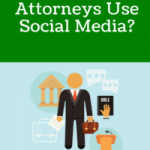It’s a tricky tightrope to walk, trying to tie your marketing campaign in with ongoing social justice movements. Sometimes you get a thoughtful, well-produced campaign that respects the issue it’s talking about, like Nike’s recent “For Once, Don’t Do It” campaign. Other times you get Kendall Jenner “healing” America’s racial divide with Pepsi.
So with so much at risk, why will brands want to keep attaching themselves to potentially controversial topics? Because audiences demand it. People want to know that the brands they care about stand for more than just selling products. And with so much competition in the marketplace for nearly every industry, it’s imperative that brands stop seeing customers, and start seeing loyal fanbases.
If your client comes to you with the desire to attach their company to a social cause, help them ponder these three things…
- It’s very, very important that you understand the issue you’re talking about. Do your homework and hire consultants if you need them. When you understand the complexity of the movement you’re attaching your brand to, you can add content of value. For example, Ben & Jerry’s have been vocal supporters of Black Lives Matter for several years, but they don’t end their activism at branded BLM ice cream (they don’t do that at all, wisely). They have literature on their website that’s meant to help educate customers about both BLM and their stance.
- Make sure your own house is clean before you start your campaign. Ben & Jerry’s has a long history of activism to back up their support of BLM—can you say the same? Showing support for Asian Americans in the midst of a series of racist attacks is a good thing, but if your business is remarkably non-diverse or a prominent member of your company has a history of racially charged language…maybe just stay quiet and donate.
- You’ve gotta walk the walk. If you’re going to talk about the need for diversity within certain sectors, you’d better have a diverse workforce yourself, or at least some non-vague commitments and initiatives to grow one. A lot of companies have started to take this hint and begun overhauling their diversity and inclusion efforts to create better spaces for their employees and their communities.
But what about backlash? Social justice movements have a lot of support among the media, but what about your client’s audience? Well, let’s talk about that.
Will backlash really hurt you?
All signs point to no, not really. The previously mentioned Kendall Jenner Pepsi ad faced several weeks of unanimously scathing backlash and yet Pepsi is still a preeminent brand and Jenner’s net worth is an estimated $45 million dollars. Of course, both Pepsi and the tangential Kardashian sister were massively popular prior to the commercial, so there’s only so much internet backlash can do to a pair of massively wealthy entities like them.
Let’s take a look back at another maligned ad campaign, Gillette’s “The Best Men Can Be” ad that tackled toxic masculinity. Again, the negative reactions were strong, with more than a few very angry men posting videos of themselves flushing their Gillette razors down the garbage disposal. But, on the other hand, for a solid week, there were a lot of people talking about Gillette, and studies of brand loyalty suggest that even the people who loudly disavowed the company continued to buy their products if they were already.
All in all, if you can find a positive, educational, additive, and not overly thirsty way of attaching your brand to an ongoing social movement, there’s not a ton of harm in doing it. However, failing to take the right steps could land you in hot water, and that’s not something every brand can recover from.











